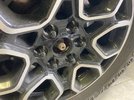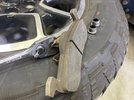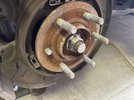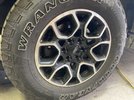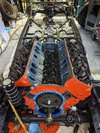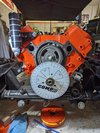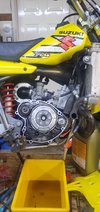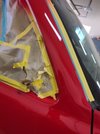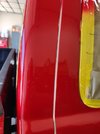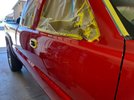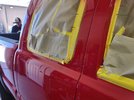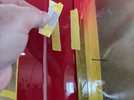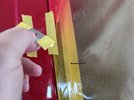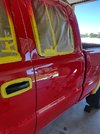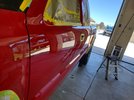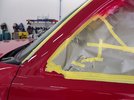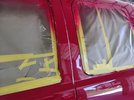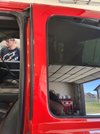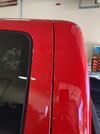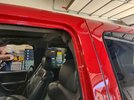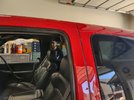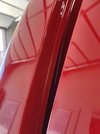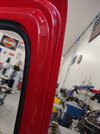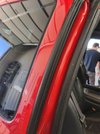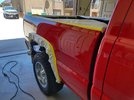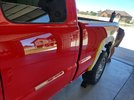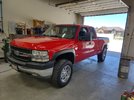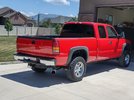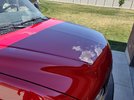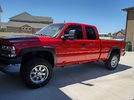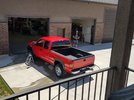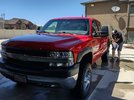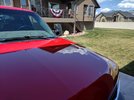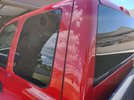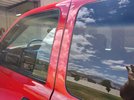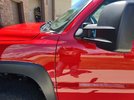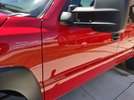What are your thoughts on using a different clear with the PPG basecoat? I'm not sure I'm comfortable playing chemistry expert with my current level of knowledge. My thoughts are that I'll lay down what I have with the appropriate activator and "flash time" in 3 "normal" coats (for me). I'll likely keep spraying to 5 coats counting on cutting about 1-2 coats off with some 2000 grit then some 3000 grit and a buffer. I was just wanting to "leave" the clear as sprayed on this car but it's not working out that way. I just have to roll with the punches a bit.
If the 161 clear is a disaster, I'll evaluate from there. I'll have plenty of room to rub that clear off with some 400 and try some SPI (you're not the first to mention that brand) over the top. I'll likely want that to "flash" for quite a while (30-60 days) before loading another clear over what's on the car at that point.
I used to feel the exact same way about mixing brands Marc. Nowadays, less nervous about it as I've been doing it for small spot jobs over the past 10+ years. My first experience was with House of Kolor bases and candy's then using PPG clear with great success.
Then I experimented on a few small jobs with Sherwin Williams, Martin Senour and Diamont bases and used PPG clears with excellent results. The Sherwin Williams base was on my son's LJ as the cost was much less than the same in PPG. The Diamont bases with PPG Clear was the biggest risk as it was on our 2003 Monaco Dynasty coach which had some clear peeling and I wanted to repaint the failing areas. Diamont was what Monaco used from the factory and was the only thing I could get mixed in the correct colors so I went with it. I initially tested it on the refrigerator cover then ended up using the Diamont base with PPG clear on the complete bedroom slide, eyebrow (area over the windshield) and the large section between the front and bedroom slides on the street (driver's) side. The result was amazing so I have little fear now of mixing brands as long as I stay with a urethane base.
One thing I have found is the most urethanes are now more comparable to PPG's DBC base rather than the older BDU bases. The DBU used an active reducer whereas the DBC and most other urethane bases I have used recently only require a reducer. After speaking with Barry @ SPI last year he recommended that if I wanted to really lock down the base well then mix about an ounce of activator from their clear into a quart of reduced base urethane (ready to spray) and it would basically turn it into a reactive reducer and help to avoid bleeds and mottling of the metallic bases. Hope all of that makes sense.
Over the years I have witnessed PPG using less and less solids in their clears resulting in my having to apply more coats in order to get the depth I was looking for and still have enough to cut & buff afterwards. In order to not run the first coat of the DC2021 clear I would apply a "fog coat" of clear initially over the base after a tack. Once the fog coat flashed for about 10 minutes I would follow by 2 full medium wet coats with 25-30 minutes flash time between coats using the 85-degree reducer. Then I would over-reduce the last coat of clear about another 10% with their 105-degree (very slow) reducer and this would allow the last coat to lay down like glass with nearly zero orange peel and a great depth.
For the past couple of years using SPI's Universal Clear I can say that it is definitely a high solids clear and does not need the previous mentioned steps. In fact with SPI's clear you do NOT want to put a fog coat down as the first coat. You want to put the first coat down as a medium wet coat and have it look like you want the final job to look. Then wait 30-minutes and do another. Two coats is all that is really needed and still provide plenty of mil thickness for a nice cut & buff job. A third coat can be applied if needed but I have not needed to use one yet and the results are amazing.
After curing I sand with 1500-grit then 2000-grit before going to compounding. On rare occasions or spots with a bit more trash or debris in them I may start with 1200-grit before going to 1500 and 2000 grits. On the open blend areas of the clear on my son's Duramax I just lightly hit them with some 2000-grit wet sandpaper before moving on to the three steps of polish and it resulted in a mirror finish without removing too much material or cutting back into the blend.
My procedure of cutting and buffing followed by a 3-step compounding/polishing process that I use has resulted in several best of paint awards, people's choice awards and best in class awards in many shows with cars that I've built.
I will post a few completed pictures of my son's Duramax in the next posts showing the results of not only the areas in which I painted, cleared and blended but also of the overall 20-year old OEM finish that we performed a full paint correction on over the weekend.
I hope that information is helpful.
Mike

